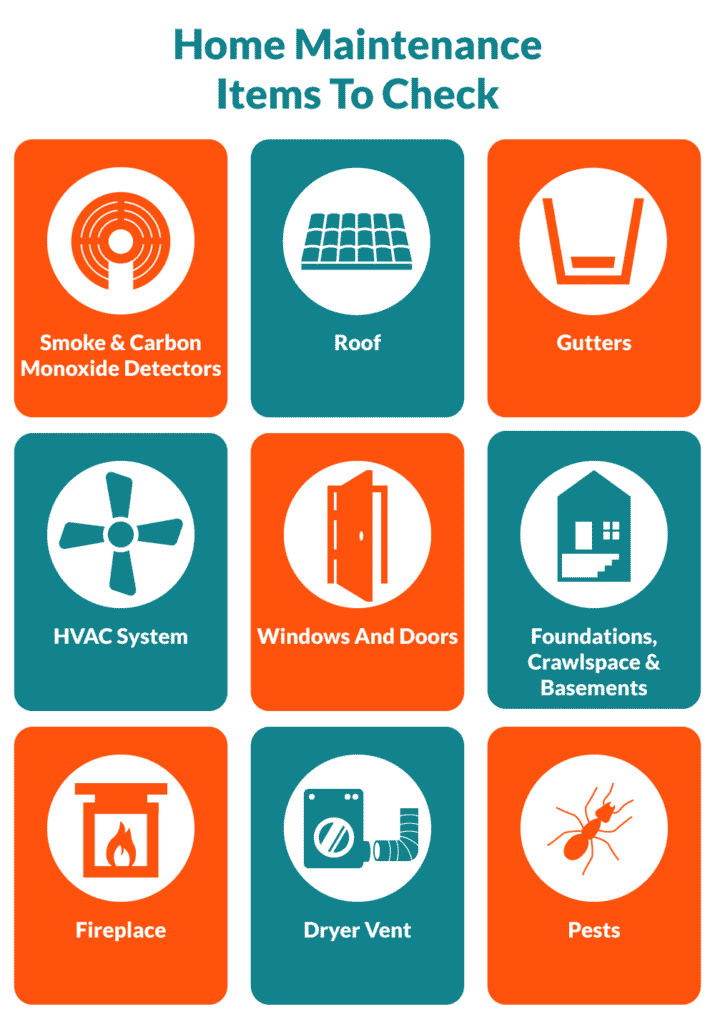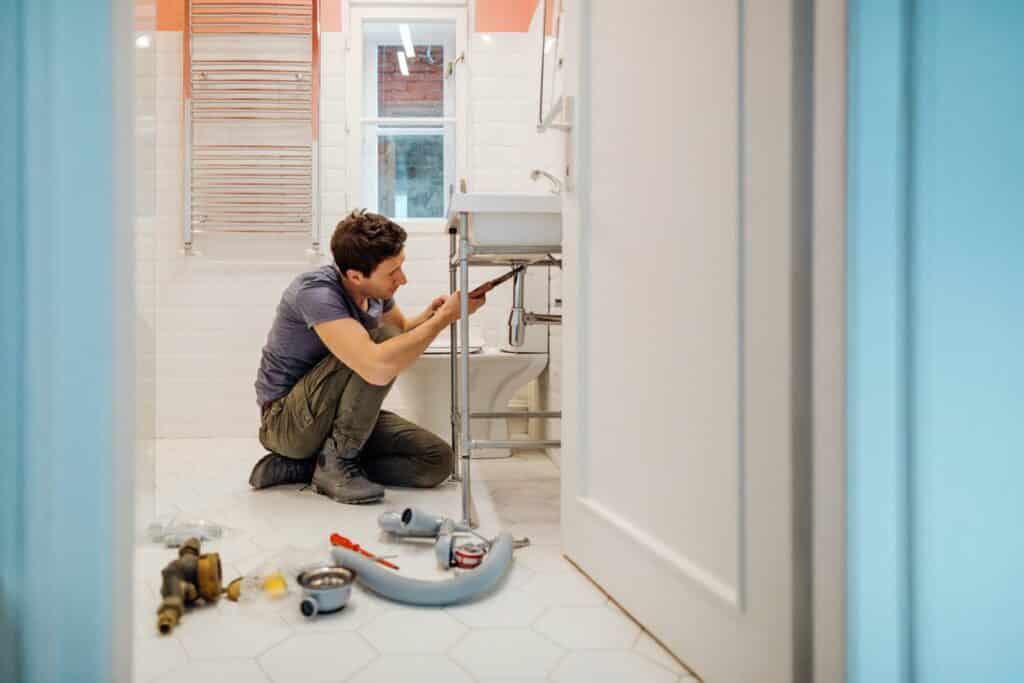Maintenance is key to protecting any investment. Since your home is one of your largest investments, you want to know how to keep it in shape.
It’s important to stay on top of small items because it helps your home maintain overall efficiency and safety. You should expect to incur some costs for maintenance on the larger components of your home, like your roof and heating & air system.
Here are the home maintenance items to check on throughout the year:

Smoke and Carbon Monoxide Detectors:
Test smoke and carbon monoxide detectors monthly. You should change the batteries in your smoke and carbon monoxide detectors once a year, and a good time to do it is when you change your clocks for Daylight Savings Time.
Roof Inspections:
At the end of the winter, get your roof inspected to make sure that it wasn’t damaged by ice or snow.
You don’t want to find out about roof damage by finding a leak in your ceiling, so roof inspections ensure that any defects are found before any further damage occurs.
Clean Gutters:
Gutters are critical to protecting your roof, siding, and foundation. Cleaning them at least twice a year will help ensure that leaky roofs aren’t caused by clogged gutters. If you have more trees that surround your house or hang over your roof, you might want to clean them more often.
Be careful checking your roof and cleaning gutters yourself. According to the American National Standards Institute, over 130,000 emergency room visits are related to ladders each year. If you suspect that there’s damage to your gutters or roof, contact a professional to further inspect them.
HVAC Checkups:
Get your HVAC system inspected to make sure that all components are up to date and ready to heat your home for the winter.
You should have your central heat and air serviced bi-annually. This is to check for any signs of damage, clean, and replace any filters that have reached their service dates.
Remember to cover outdoor air conditioning units to keep snow and ice from damaging them in the winter. However, if you have all-electric heat you will want to make sure that your outside unit is not covered as these do run in the wintertime.
Check for Drafts:
As the weather starts to cool down, check for drafts around your windows and doors. When cold air slips in, it can cause your heating bills to increase.
During spring, check the seals and weather stripping around windows and doors. Cracked caulking should be touched up to prevent the loss of cool air during the summer.
Foundations, Crawlspaces, and Basements:
If you have an older home close foundation vents to help lower your heating costs. Ventilation is good for crawl spaces in the spring, summer, and fall, but closing them will help keep the cold air out during the winter. However, most newer built homes do not contain outside vents in crawlspaces as they are built conditioned with A/C and heat vents.
Also, be sure to test your sump pump before spring (if you have one). Many basement leaks occur in the spring when everything begins to thaw, so make sure your sump pump works just in case.
After heavy rains, check your foundation for cracks or crawlspace for water.
Fireplace Inspections:
Have a professional inspect your chimney annually before the first fire of the season. Fireplaces that do not get used regularly still need to have a regular checkup. Depending on how often you use it, you’ll also need to have it cleaned periodically.
According to the Chimney Safety Institute of America, dirty chimneys can cause slow-burning fires that can go undetected inside the chimney, in-turn causing damage to the chimney and surrounding parts of the house.
Dryer Vent:
It can be easy for lint and debris to build up inside the duct of your dryer if it’s not cleaned regularly. This can cause it to work overtime and eventually become a fire hazard.
If you notice that it’s taking longer for your clothes to dry, it might be time to clean the lint out of your dryer vent pipe (or have a professional do it for you). This process should take place at least once a year to eliminate fire hazards and keep your dryer in shape.
Pests:
You don’t want to share your home with termites, bees, ants, or mice. Prevent infestations by sealing holes in any areas where pests may get in. This includes attics, basements, crawlspaces, and cracks around windows and doors.
If you have a persisting problem with pests, contact a pest control specialist to help.
With Reinbrecht, your home comes with a 2-10 Homebuyers Warranty to protect your investment for years to come. Learn more about our homebuyers warranty and the features that come standard with your home.




